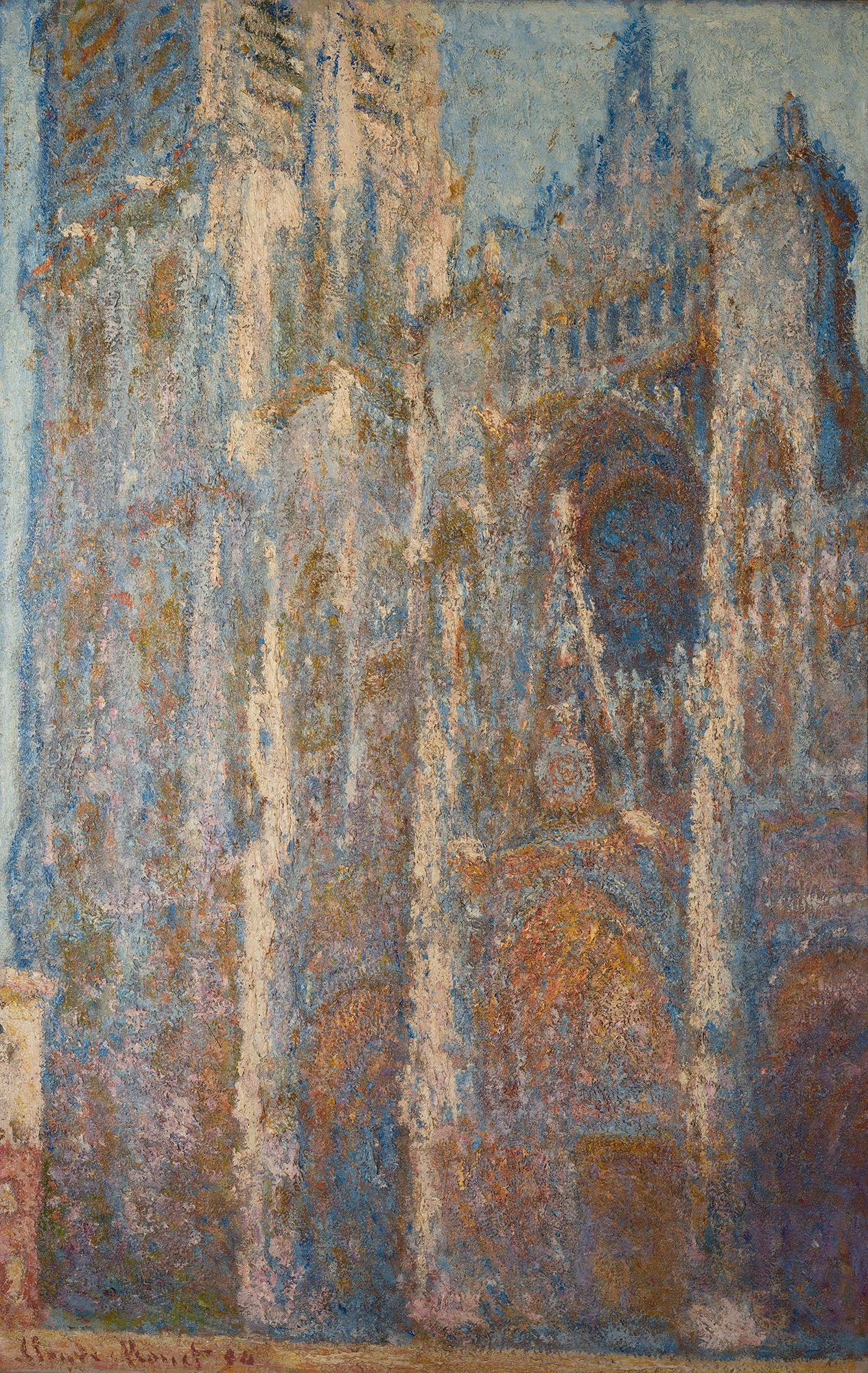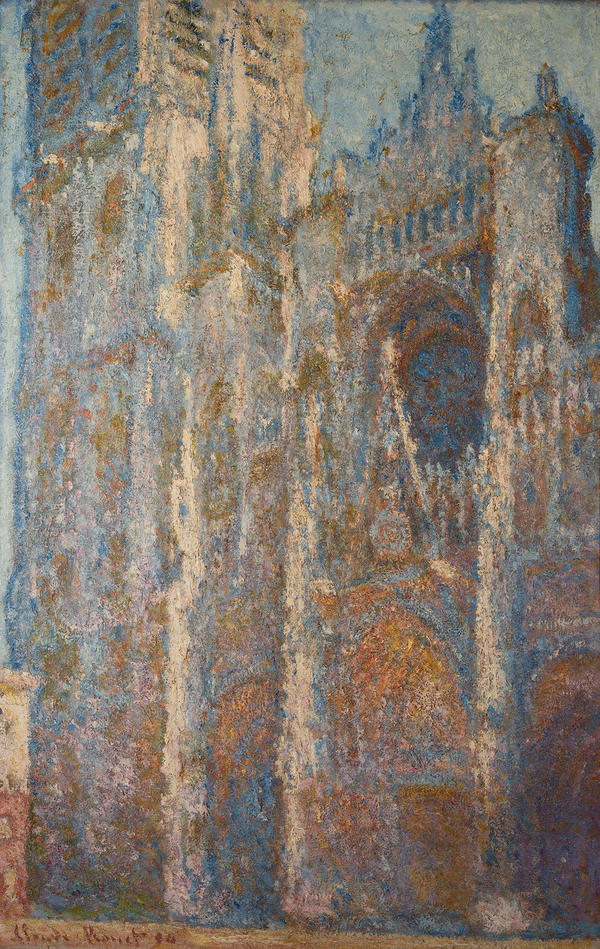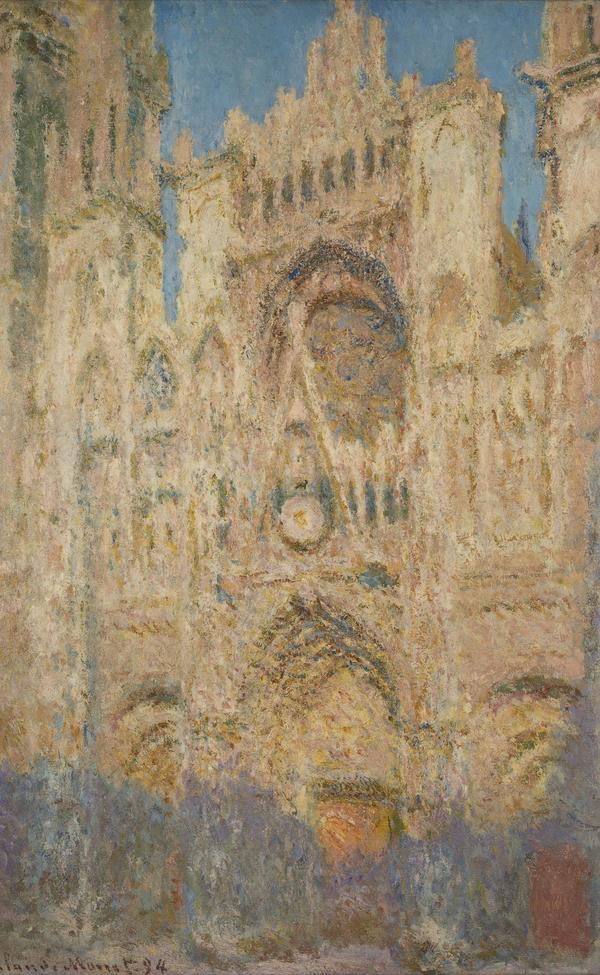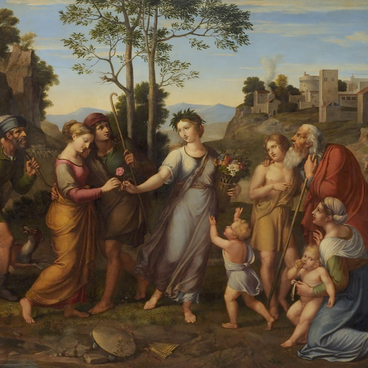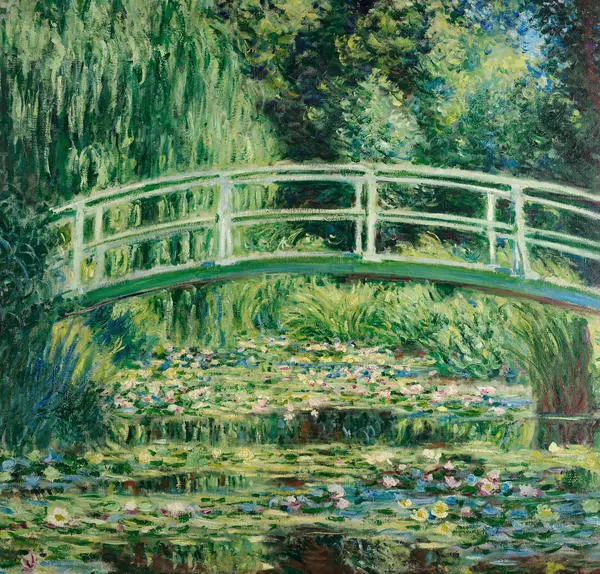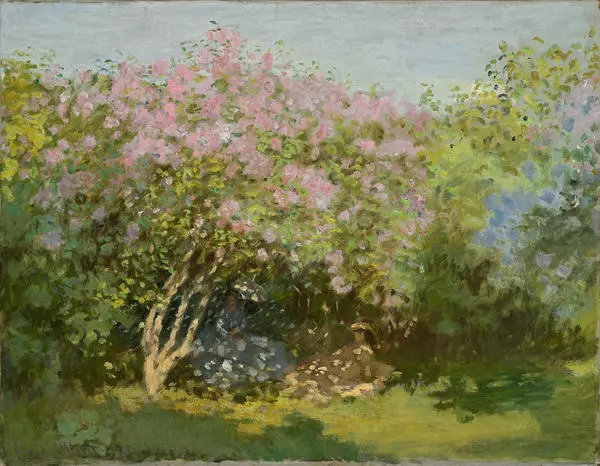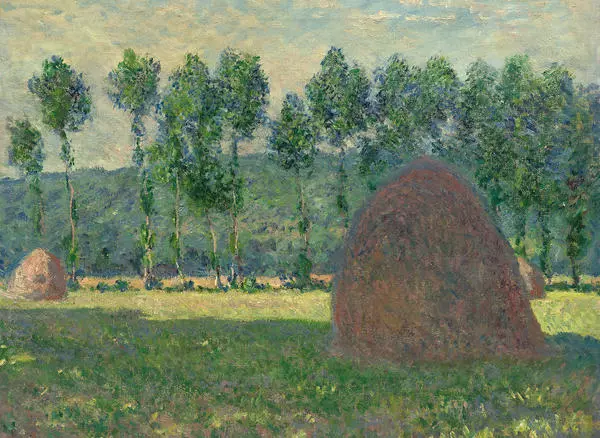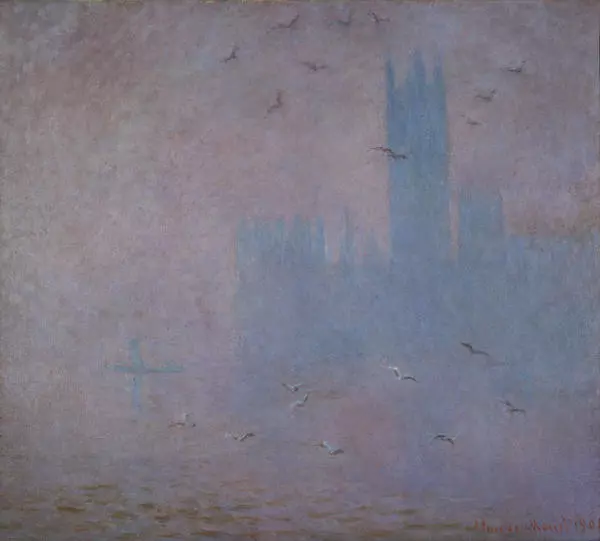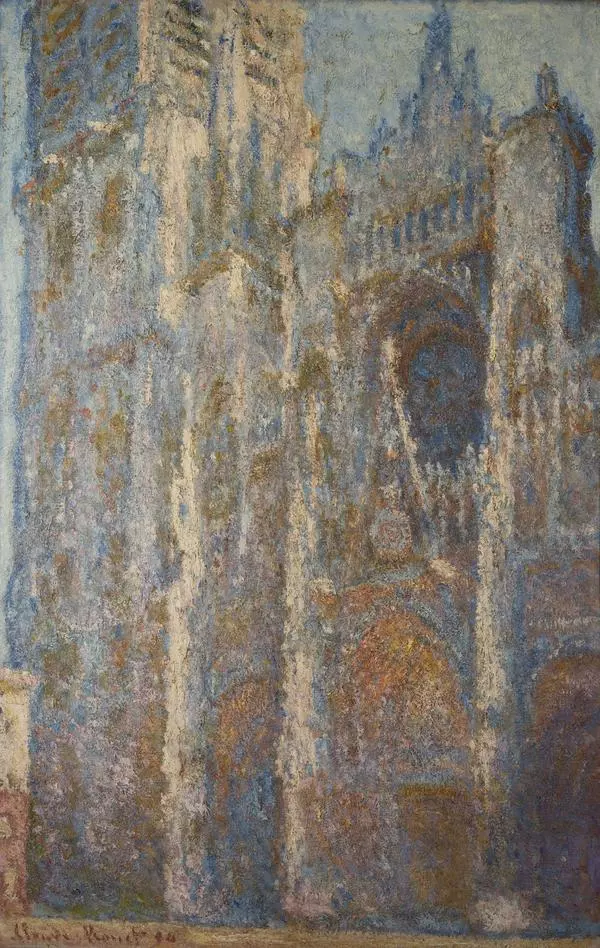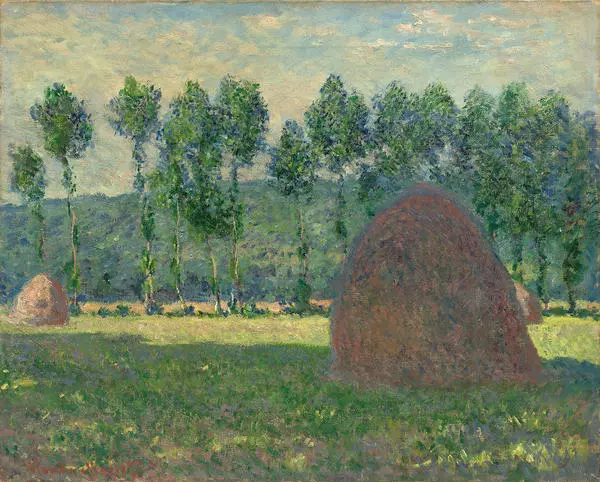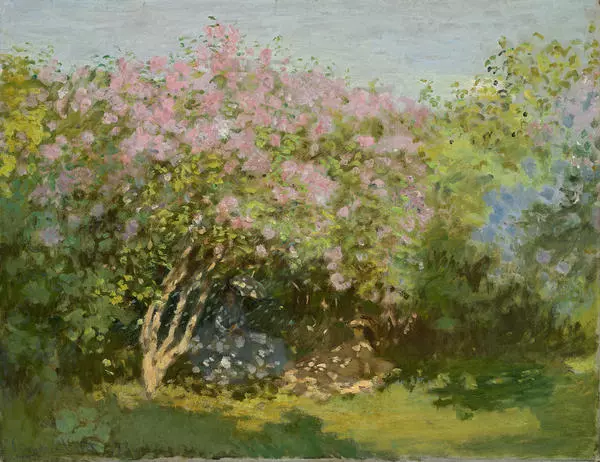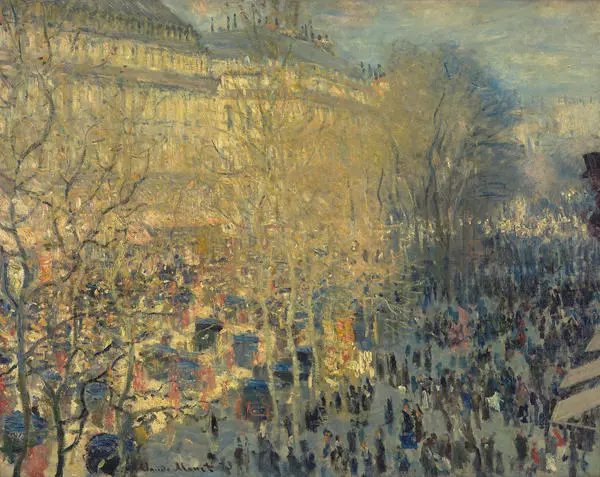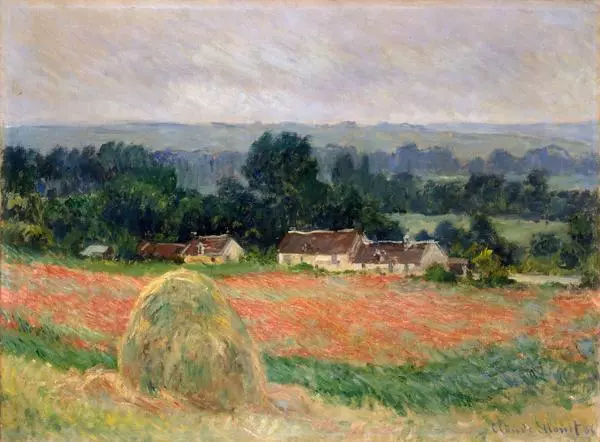Trying to capture different light nuances and the complexity of color interactions, Monet started to work on series of paintings dedicated to a single motif at the end of the 1880s. Monet created more than 20 paintings depicting the Rouen Cathedral. The fanciful French Gothic architecture lost its independent meaning for the artist and turned into a screen, where an endless game of light and color was played out.
The works “The Rouen Cathedral at Noon” and “The Rouen Cathedral in the evening” were probably painted from a window of the building standing in front of the cathedral. The façade image fills the whole canvas, but the structural logic of the Gothic cathedral recedes before the living power of light. The stone giant seems to melt away before us under the light airy haze covering its façade. The artist ignores lines and drawing almost completely, dissolving them in colorful patches. One painting complements another, and the feeling of movement and flow of the objective forms is strengthened in the comparison of the two canvases. In this series, time itself flows, captured in the change of tone from one canvas to the other, while the paintings together constitute a uniform decorative composition. Monet’s brush strokes have a relief texture resembling the texture of stone.
The works “The Rouen Cathedral at Noon” and “The Rouen Cathedral in the evening” were probably painted from a window of the building standing in front of the cathedral. The façade image fills the whole canvas, but the structural logic of the Gothic cathedral recedes before the living power of light. The stone giant seems to melt away before us under the light airy haze covering its façade. The artist ignores lines and drawing almost completely, dissolving them in colorful patches. One painting complements another, and the feeling of movement and flow of the objective forms is strengthened in the comparison of the two canvases. In this series, time itself flows, captured in the change of tone from one canvas to the other, while the paintings together constitute a uniform decorative composition. Monet’s brush strokes have a relief texture resembling the texture of stone.
